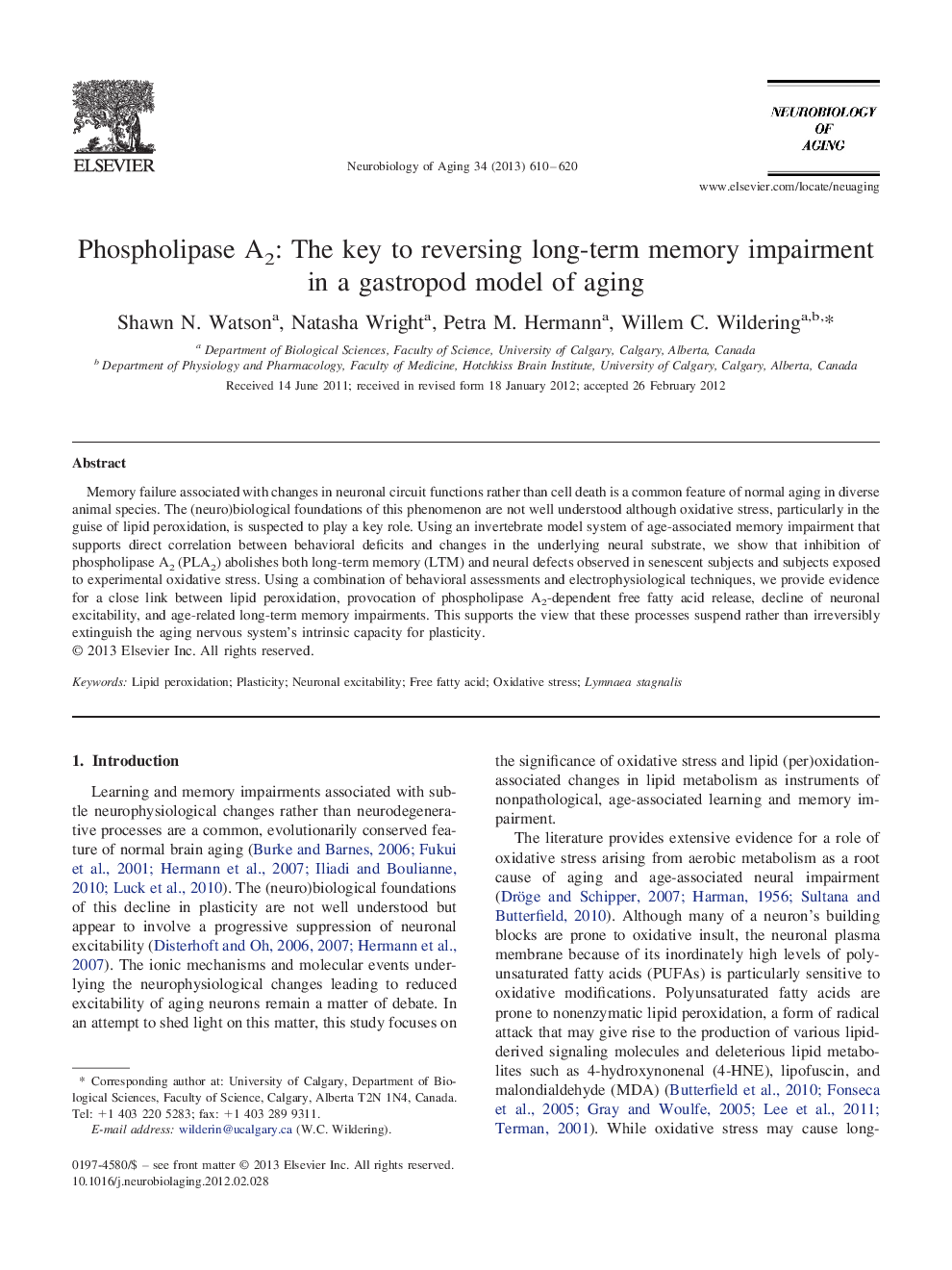| Article ID | Journal | Published Year | Pages | File Type |
|---|---|---|---|---|
| 330792 | Neurobiology of Aging | 2013 | 11 Pages |
Memory failure associated with changes in neuronal circuit functions rather than cell death is a common feature of normal aging in diverse animal species. The (neuro)biological foundations of this phenomenon are not well understood although oxidative stress, particularly in the guise of lipid peroxidation, is suspected to play a key role. Using an invertebrate model system of age-associated memory impairment that supports direct correlation between behavioral deficits and changes in the underlying neural substrate, we show that inhibition of phospholipase A2 (PLA2) abolishes both long-term memory (LTM) and neural defects observed in senescent subjects and subjects exposed to experimental oxidative stress. Using a combination of behavioral assessments and electrophysiological techniques, we provide evidence for a close link between lipid peroxidation, provocation of phospholipase A2-dependent free fatty acid release, decline of neuronal excitability, and age-related long-term memory impairments. This supports the view that these processes suspend rather than irreversibly extinguish the aging nervous system's intrinsic capacity for plasticity.
